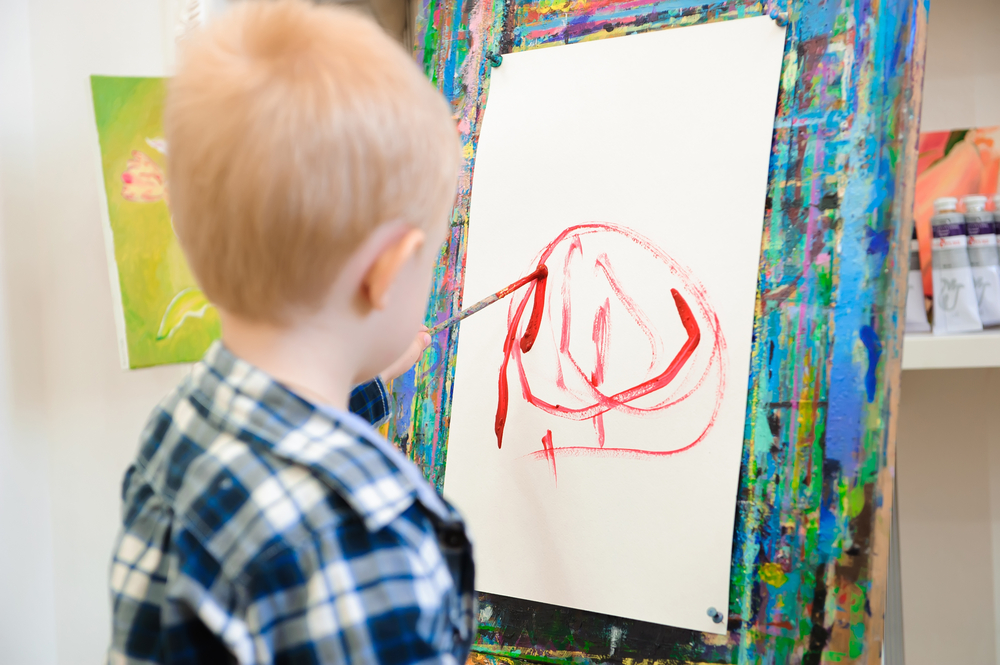Benefits Of Art Therapy For Learning Disabilities

For those who deal with learning disabilities like ADHD, dyslexia, processing disorders or many others, the use of certain creative activities is often a key part of therapy and treatment to assist with these conditions. One great example, and which can be applied to many different learning disabilities and those who deal with them, is the use of art therapy.
At Learning Technics, we're happy to provide a wide range of caring, helpful treatments for ADHD, dyslexia and other learning disabilities. We offer everything from on-site learning clinics to at-home self-guided programs, such as ThinkFast, and we also welcome a variety of approaches from our patients for their own care. Here are some basics on what art therapy is, plus why it's often helpful for those with learning disabilities to utilize as one of the tools in their overall treatment toolbox.
What is Art Therapy?
Art therapy refers to a wide range of approaches and techniques for helping patients work through the things that are causing them difficulty in their lives. It often utilizes art-based activities like drawing, painting, sculpting or other methods suitable to each individual patient and their particular conditions, and it can help people learn to express themselves more openly as well as improving their overall social skills.
One of the key tenets of art therapy, particularly for those with learning disabilities, is the complete lack of restrictions or "failure" of any kind. In other words, a person is free to create and express whatever they wish, even if their end result may not look like much at first. It's all about experimentation and exploration rather than trying to create something that "looks right", and the process of making art can often help those with learning disabilities improve their overall functioning in many ways.
Communicating Personal Experiences
For many with learning disabilities, one of the key struggles that results from their condition is trouble with fully expressing thoughts and emotions that are hard to articulate. Art therapy can help with this by giving patients a form of outlet and allowing them to communicate their personal experiences in a more tangible way.
For instance, for those with ADHD, art therapy can be a great way to manage and understand the different ways their condition may result in hyperactivity, such as issues of frustration. It allows them to explore how these feelings manifest themselves without worrying about causing discomfort or being judged by others, while also offering opportunities for learning new coping strategies through viewing what they have created.
Art and Brain Dopamine Levels
In addition, research has consistently shown that creation of art stimulates higher levels of brain dopamine, which can help improve overall mood and reduce stress. For patients with ADHD or similar conditions that often result in irritability and anxiety, this can be hugely beneficial.
For those unfamiliar with it, dopamine is a chemical in the brain that is closely related to feelings of pleasure and reward, which helps motivate humans to perform certain actions. In addition, it has also been linked to higher levels of focus and concentration as well as better cognitive functioning in general.
This makes art therapy an amazing tool for those with learning disabilities like ADHD, dyslexia or processing disorders, and one that we at Learning Technics feel can be a key part of any treatment program. If you or someone you know is struggling with such learning disabilities, being able to create your own art pieces can be an amazing way to express yourself as well as improve your overall mood and attention span over time.
Colors and Emotions
Another key benefit of art therapy is that it allows patients to explore the relationship between colors and emotions in a way that can be extremely grounding for those with learning disabilities. In other words, being able to see how certain shades relate to different feelings like anger or sadness may allow them an easier way to understand and manage these emotions when they become overwhelming.
Helps Foster Healing
For others who deal with learning disabilities, trauma from a past event, or other conditions that have caused them grief in their life, art therapy can be a key tool to foster healing and offer an outlet for these emotions.
For example, those with traumatic experiences may find it harder to express themselves verbally, resulting in issues like anxiety or depression. With art therapy, they are able to explore these emotions through their artwork, which can help them heal and come to terms with their past.
Finally, art therapy is also a great way to provide patients with an outlet for creativity and imagination that they may not have access to any other way. In general, being able to create something tangible out of one's own ideas can be hugely rewarding and beneficial on many different levels.
Easy to Combine With Other Therapy Techniques
Finally, art therapy is also a great option for those who are combining it with other forms of therapy, such as speech or occupational therapy. For example, those with ADHD may find it easier to focus on their art while also receiving traditional treatment methods like cognitive behavioral therapy at the same time.
Ultimately, art therapy can be an amazing tool for helping patients of all ages, genders and backgrounds manage learning disabilities like ADHD. Whether you're dealing with hyperactivity or another issue that is holding you back from achieving your goals, art can be a great way to explore new ways to express yourself as well as boost your overall mood and cognitive functioning over time.
For more on this, or to learn about any of our learning disability therapy programs and caring services, speak to our staff at Learning Technics today.